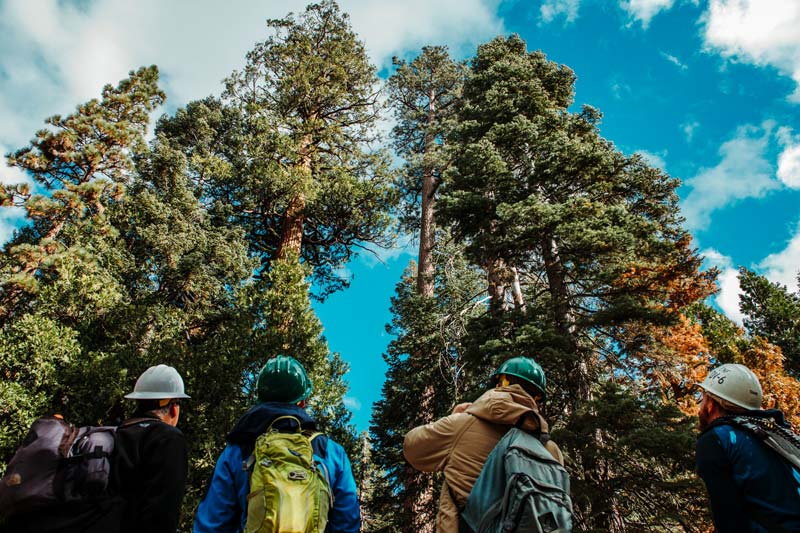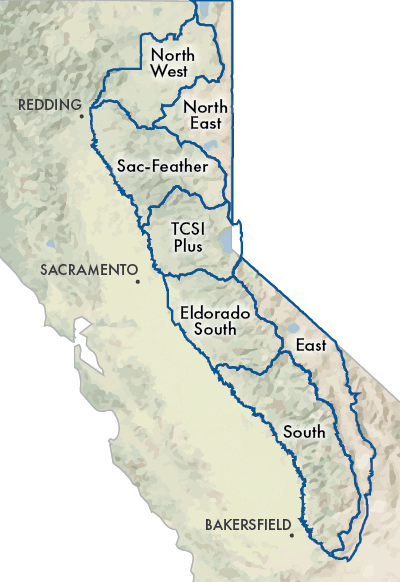
In 2019, the California Natural Resources Agency launched the Regional Forest and Fire Capacity Program (RFFCP) to support forest health by increasing regional capacity to prioritize, develop, and implement landscape-level forest health and wildfire resiliency. The RFFCP was inspired by our Sierra Nevada Watershed Improvement Program (WIP) and seeks to duplicate the WIP’s approach across the state.
Watershed Improvement Program (WIP) Capacity-Building
The Sierra Nevada Conservancy is using a $1.9 million grant from the RFFCP to expand our capacity building work in the Sierra Nevada Region. Through the WIP, we have distributed this funding to local organizations with the goal of promoting robust, collaborative forest health partnerships. RFFCP resources are increasing our ability to prioritize forest health and fire protection activities, plan projects, obtain funding, provide workforce training, and develop partnerships to implement projects.
This will allow us to get forest restoration work done on the ground faster.
In less than one year, RFFCP resources are already being used to:
- Launch Fire Safe Councils and fund Community Wildfire Protection Plans
- Support and train prescribed fire cooperatives
- Identify project locations with completed NEPA that have never been treated and file SB901 CEQA exemptions to create shovel-ready projects
- Convene a ‘Stakeholder’s Exchange’ where forest and fire organizations and agencies share information on projects and find ways to work together
- Train organizations in financial management, change management, and grant writing
- Explore the centralization of funding, planning, and project administration for multiple small Fire Safe Councils in one office
- Develop user-friendly mapping software so forest collaboratives can map existing and proposed priority projects
- Use a drone with sophisticated forest identification software to help plan and monitor restoration projects
Through our work across the 25-million-acre Sierra Nevada Region, our ability to reduce wildfire risk is dependent on the capacity of our local partners. Building organizational capacity and supporting the development of a forest restoration workforce is just as important as providing funding for implementation, and through the RFFCP we’re setting a foundation for future success.
A Regional Approach
The capacity needs across the Sierra Nevada Region vary greatly, as do the on-the-ground project needs. In order to effectively address those differences, the SNC broke its 25-million-acre Region into seven geographic areas and have awarded RFFCP funds within each.

| Geography | Grantee |
|---|---|
| North West | Pit River RCD |
| North East | Modoc RCD |
| Sac-Feather | Feather River RCD, Sierra Nevada Alliance |
| TCSI Plus | CA Association of RCDs |
| Eldorado South | Tuolumne River Trust, Upper Mokelumne River Watershed Authority |
| South | Yosemite-Sequoia RC&D, Sierra Nevada Alliance, Great Basin Institute, American Forests |
| East | Eastern CA Water Association, Sierra Nevada Alliance, Great Basin Institute, American Forests |
Each geography is approximately 3 million acres, which is an actionable area based on our experience working at scale. Geographies are also based on watershed boundaries and grouped by ecosystem similarities and existing collaboratives’ areas of work.
About the RFFCP
The Regional Forest and Fire Capacity Program furthers the ability of forest communities to work together with public land managers to increase forest restoration and fire protection activities. The RFFCP is a California Natural Resources Agency program administered by the Department of Conservation and is part of California Climate Investments, a statewide initiative that puts billions of Cap-and-Trade dollars to work reducing greenhouse gas emissions, strengthening the economy, and improving public health and the environment — particularly in disadvantaged communities.


